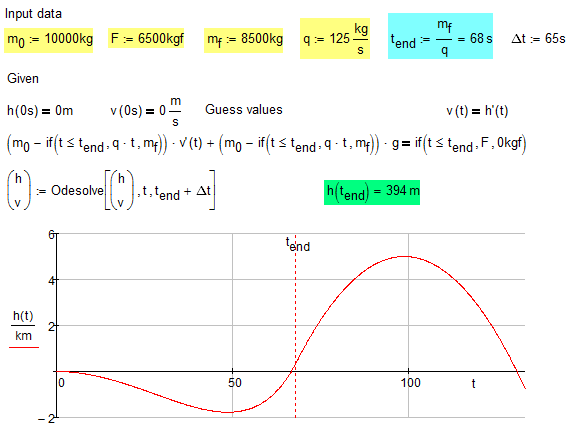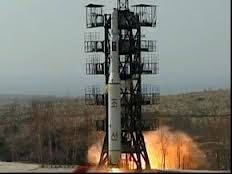Community Tip - Need to share some code when posting a question or reply? Make sure to use the "Insert code sample" menu option. Learn more! X
- Subscribe to RSS Feed
- Mark Topic as New
- Mark Topic as Read
- Float this Topic for Current User
- Bookmark
- Subscribe
- Mute
- Printer Friendly Page
One Rocket
- Mark as New
- Bookmark
- Subscribe
- Mute
- Subscribe to RSS Feed
- Permalink
- Notify Moderator
One Rocket
I can not solve this task in Prime (with units) ![]() Help me please!
Help me please!
In Mathcad 15 - no problem (see the attach). We can add air resistance, g=f(h) etc
PS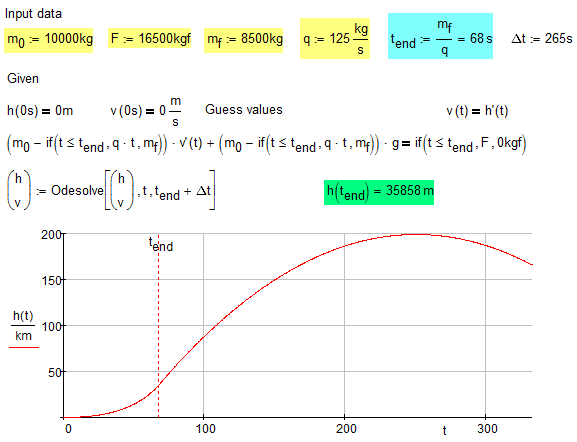
One North Korean rocket ![]()

Solved! Go to Solution.
- Labels:
-
Other
Accepted Solutions
- Mark as New
- Bookmark
- Subscribe
- Mute
- Subscribe to RSS Feed
- Permalink
- Notify Moderator
This is similar to the use of alcohol - first bad, then good, then bad again:

- Mark as New
- Bookmark
- Subscribe
- Mute
- Subscribe to RSS Feed
- Permalink
- Notify Moderator
It seems starightforward enough in Prime 2 - see attached. Perhaps I'm missing something?
Alan
- Mark as New
- Bookmark
- Subscribe
- Mute
- Subscribe to RSS Feed
- Permalink
- Notify Moderator
Thanks, Alan!
I have done it too by help the Mathcad 15 Mathcad Prime convertor.
But I cannot do it direct.
Questions (2 old and 2 new) on the picture:
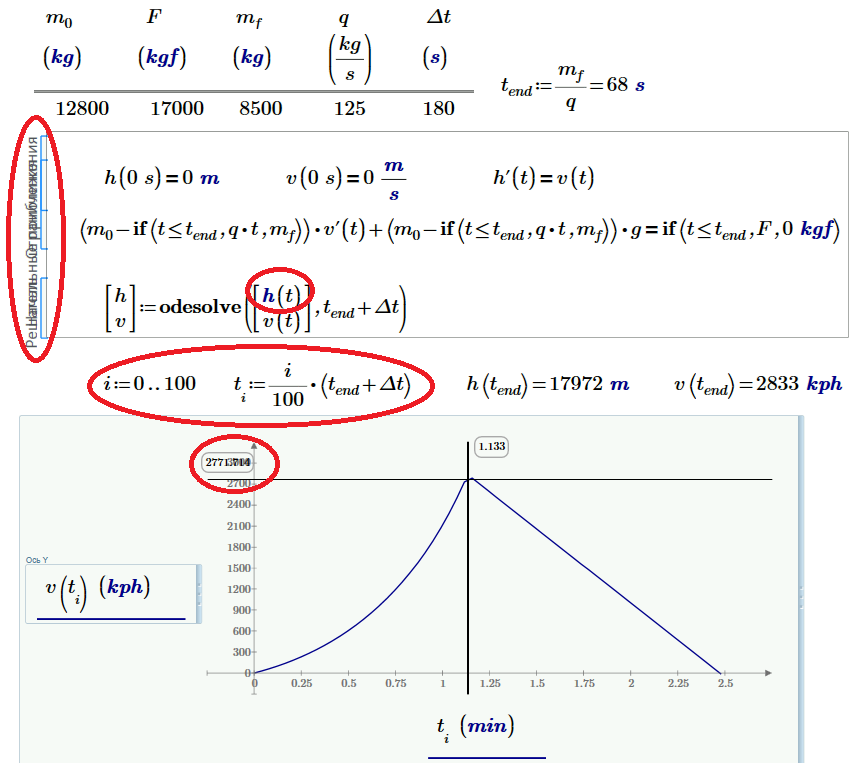
- Mark as New
- Bookmark
- Subscribe
- Mute
- Subscribe to RSS Feed
- Permalink
- Notify Moderator
Valery Ochkov wrote:
Thanks, Alan!
I have done it too by help the Mathcad 15 Mathcad Prime convertor.
But I cannot do it direct.
I didn't use the converter (I still only use M15 F000, so the converter doesn't work), I did it direct without any problems. In answer to your red questions: I also get the mess of words on the side of the solve block; and the blue h of the h(t) in odesolve; and the messy looking marker label. By increasing the number of -plotting points it is easy enough to get rid of the velocity glitch near tend:
Alan
- Mark as New
- Bookmark
- Subscribe
- Mute
- Subscribe to RSS Feed
- Permalink
- Notify Moderator
Other solution (Euler Method?) this problem from http://festival.1september.ru/articles/103956/
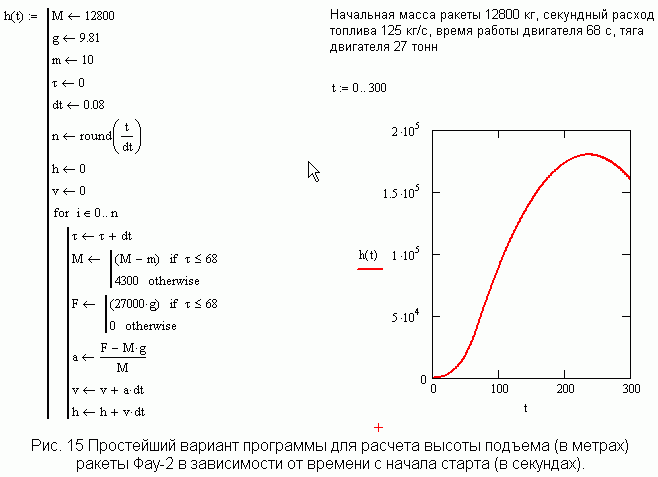
- Mark as New
- Bookmark
- Subscribe
- Mute
- Subscribe to RSS Feed
- Permalink
- Notify Moderator
This is similar to the use of alcohol - first bad, then good, then bad again:

- Mark as New
- Bookmark
- Subscribe
- Mute
- Subscribe to RSS Feed
- Permalink
- Notify Moderator
I'm somewhat lost as to where you are going with this Valery! Does this mean you are now able to program this problem succesfully in Prime (something you didn't manage earlier)?
Alan
- Mark as New
- Bookmark
- Subscribe
- Mute
- Subscribe to RSS Feed
- Permalink
- Notify Moderator
AlanStevens wrote:
I'm somewhat lost as to where you are going with this Valery!
I also ![]()
But one interesting problem...
For animation and for this group
http://communities.ptc.com/groups/dynamic-models-in-mathcad
too...
- Mark as New
- Bookmark
- Subscribe
- Mute
- Subscribe to RSS Feed
- Permalink
- Notify Moderator
- Mark as New
- Bookmark
- Subscribe
- Mute
- Subscribe to RSS Feed
- Permalink
- Notify Moderator
Valery Ochkov wrote:
O
The first part of the rocket flight - is a virtual flight (h=0). The rocket is on the start platform and burns fuel (m.f) as long as its weight (m*g) becomes (10 9 8 7 6 5 4 3 2 1 Zero) equal its engine thrust (F)

I don't think the calculation shows this. At the end of the calculated "virtual" flight there is a significant upward velocity! If the rocket stayed on the platform just burning fuel it would have a zero upward velocity at the point of take-off. ![]()
Alan
- Mark as New
- Bookmark
- Subscribe
- Mute
- Subscribe to RSS Feed
- Permalink
- Notify Moderator
Yes - no limit to improve calculation
Add h=g(h) and air resistance - with cloud functions!

- Mark as New
- Bookmark
- Subscribe
- Mute
- Subscribe to RSS Feed
- Permalink
- Notify Moderator
Can't say I'm a big fan of the "if" statements being used directly "in-line", within the solver. I think it is easier to understand if done as follows:
Alan
- Mark as New
- Bookmark
- Subscribe
- Mute
- Subscribe to RSS Feed
- Permalink
- Notify Moderator

